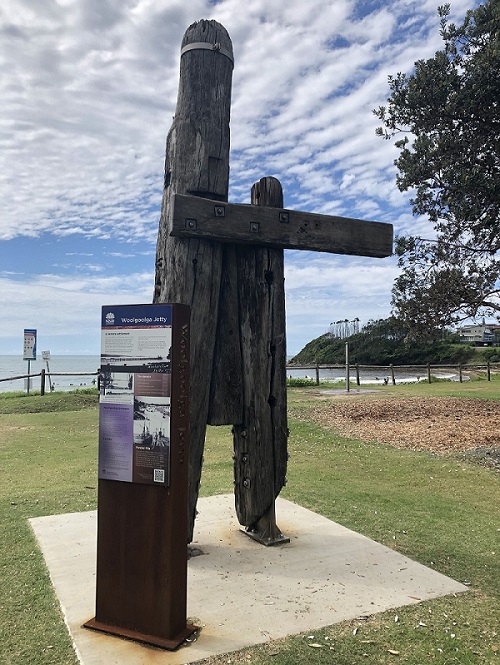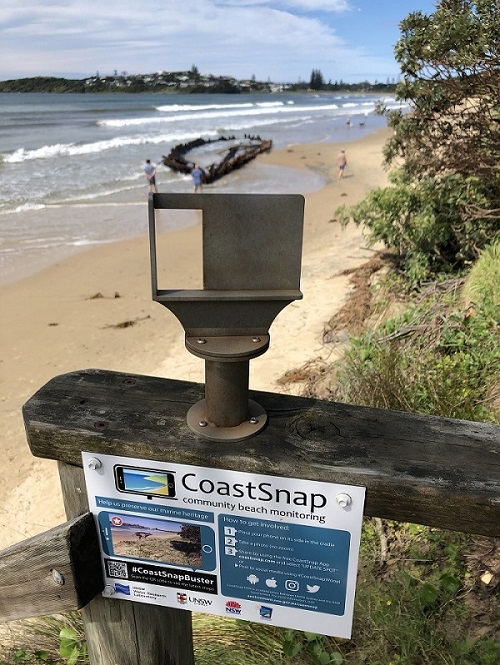
Cultural heritage
Aboriginal heritage
The local Aboriginal communities within the Gumbaynggirr Nation and Yaegl Nation have strong cultural links with the Marine Park and are actively involved in planning its conservation.
The Gumbaynggirr people are the traditional owners of the land and sea in central and southern section of the park, with some overlap with the Yaegl people in the northern section.
Several Elder groups live adjacent to and use the marine resources from the park, including:
- the Birrigan Gargle Elders (generally north from the Wooli Wooli River);
- Garby Elders (generally Minnie Water to Moonee Creek, known as Munim-Munim by the Gumbaynggirr people);
- Garlambila Guuya Girrwaa Elders (generally south of Moonee Creek ).
Important sites for collecting marine plants and animals include Coffs Creek, Park Beach, Arrawarra Headland, Corindi River, Corindi Beach and rock platform, and the Sandon River.
Sites within the marine park have been used for thousands of years for resource use, cultural gatherings and storytelling and are still very significant to Aboriginal communities.
Visit Arrawawarra Sharing Culture for more information.
See the Aboriginal engagement and cultural use of fisheries resources policy (PDF, 171 KB) for more information.
Maritime heritage
European maritime heritage began in the Solitary Islands Marine Park during a stormy Tuesday on 15 May 1770 when Lieutenant James Cook on the HMB Endeavour sighted some small rocky islands which he named the ‘Solitary Isles’.
Sailing ships began trading up and down the coast from the early 1800’s, using the many sheltered bays as a safe place to anchor, load and unload produce, stores and equipment vital for the progress of the region.
As the years progressed, facilities such as the Woolgoolga jetty were built to cater for the increase in shipping and trade. These facilities gradually became redundant and fell into disrepair. The only surviving remnant of the Woolgoolga jetty has been restored and erected in the Woolgoolga Beach reserve where the original jetty was located.
Woolgoolga was the historic hub of maritime activity in the Solitary Islands Marine Park and a lot of its maritime heritage survives today. Watch this video to learn more or take a more detailed look at Woolgoolga’s maritime heritage story.
As shipping in the area increased, so too did accidents and over the years many ships have been lost in or near the area, especially during the 1800s. Two notable incidents involved the iron steamer Keilawarra and the barquentine Buster.
The Keilawarra, built in 1878, was carrying passengers when it collided with the Helen Nicholl near North Solitary Island in 1886. More than 40 lives were lost. The Keilawarra was found in 2000 near North Solitary Island in about 70 m of water.
The Buster arrived from Sydney on 17 February 1893 and moored in the bay offshore from Woolgoolga Beach. Wind and seas increased, and she was eventually washed ashore with no loss of life. All attempts at salvage were unsuccessful and the Buster still lies at the northern end Woolgoolga Beach.
The sands of Woolgoolga Beach reveal the Buster from time to time. You can help monitor the accretion and erosion of sand around the Buster to inform the future management of the wreck by using the CoastSnap site at the northern end of the beach.
Please enjoy the maritime heritage of the Solitary Islands Marine Park and take care of it for future generations. It is an offence to move, damage or destroy an historic shipwreck, associated relic or any archaeological site, or to climb on or interfere with the Buster. Heavy fines apply.



